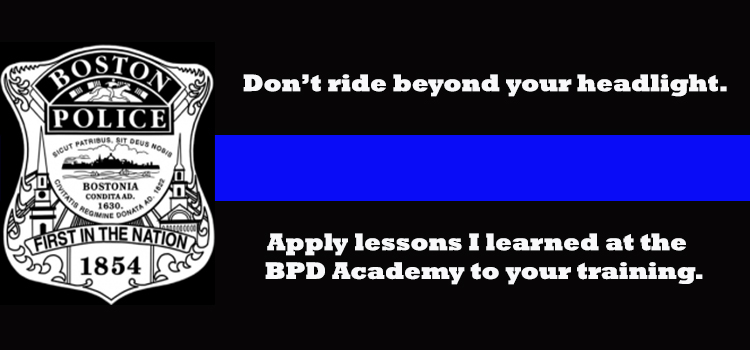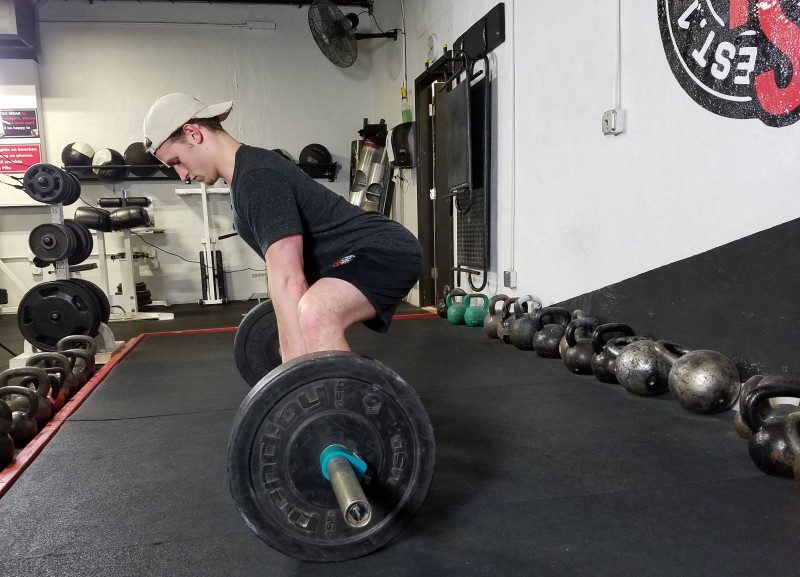
Way back in the early 90’s (91 or 92) I went to Motorcycle School run by the Boston Police Special Ops Unit, and they taught us to do some badass shit on our bikes.
I remember showing up and thinking I knew how to ride a bike pretty well, but after watching the instructors show us some of the things we needed to do in order to pass the practical exam, I was disheartened to say the least.
These guys were beasts doing things you only saw in movies. I was 100% willing to try, but I didn’t have much confidence in my ability to replicate the symphony of awesomeness they performed on an 800 pound Harley Davidson.
Well, at the end of the training week, I did pass and with flying colors. The staff of instructors was Grade A and they taught a group of goons ranging from people who had never ridden a motorcycle even once, to pretty experienced guys (like myself and my partner) to handle an 800 pound beast of a machine like it was nothing.
They had us doing things similar to the video below.
Scroll to 5:26 in the video for cool stuff.
One thing that I realized was that they taught us in a manner similar to Conjugate training.
They broke things down and had us do parts of movements and then built off of each to finally put the whole thing together.
This is similar to using boards on the bench to build different ranges, and then put it all together in the meet, but I digress.
One thing that stuck with me besides FINE-C (Fuel, Ignition, Neutral, Engine-Clutch) and the SIPDE (Scan, Identify, Predict, Decide, Execute) principle was Don’t Ride Beyond Your Headlight.
They explained that no matter how high your level of skill is operating a motorcycle, you can’t ride beyond your headlight (at night).
This may seem like common sense, but they drilled it into us. You can have all of the skills in the world, but if you ride beyond your headlight, your chances of eating pavement or worse are drastically increased.
This relates back to training well in a lot of areas, especially for beginner and intermediate lifters. Especially with the abundance of information available on the internet these days.
So, how as lifters do we avoid riding beyond our headlight?
Look at your current level of skill and strength and evaluate what you need to do objectively.
This may be difficult for new lifters or even veteran lifters. If you don’t know how to figure this out, a skilled coach can help.
On that note, I had a conversation the other day with an experienced lifter about coaching and programming, what they said surprised me. They said that they would never go to a coach with less than 10 years’ experience (I think it was 10 years, may have been more) because they are not a Guinea Pig for a coach with 2 years’ experience to test out their theories on. Their words not mine, but it rings true.
If you are going to hire a coach, find one with experience and a successful record of improving lifters skill and total.
Beginners need to focus on basics.
- They need to learn to squat, bench press and deadlift well.
- They need basic assistance and accessory work.
- They need to improve GPP and limit strength.
- They need to learn how to strain, after all, the sport is about straining right?
- They need to build muscle. You can’t flex fat.
For these people, using complicated programs, oddball accessory lifts, adding bands, chains and similar overload techniques is riding beyond their headlight.
They need to learn how to lift first. They need to work hard at basic assistance and accessory exercises to build their strength.
Intermediate lifters face a different conundrum.
An intermediate now has some skill and strength, and hopefully a good understanding of the lifts and their respective techniques. This may be the time to add in more advanced things or specialty exercises.
The issue here is what is needed and what is overkill or wasteful?
This is something that will be unique to each lifter. I think a good question to ask yourself when deciding if you are about to ride beyond your headlight is:
Will this movement improve my weakness?
If you answer YES right away, then it is probably a good idea.
If you are not sure, perhaps you should look at a more basic variation.
The same applies to a program. Look at 5/3/1. It’s about as basic as it gets, but it works.
Why?
Because it is based on effort and consistent hard work.
I like effort and consistency.
It pays off. I also like to have different tools in my box.
When taking a tool out of the box, I always make sure it is a tool they are ready to use.
You are not going to jump onto a mill without knowing how to use a drill press first right?
Well, you better not jump into exercises that are above your paygrade either.
If you can’t do 15 pushups, adding a doubled mini band to your bench press might be a bad idea. Choose the right tool.
So, when setting up your training, think about your skill level and strengths/weaknesses, and then stay within your headlight.
Keep the rubber side down kids.
Ask me a question-Be sure and Type to Murph in the header
Find me on Google-search for Total Performance Sports Malden, Mass.
The Best Gym in Boston, Facebook too.
Oh, yeah, follow us on Instagram too. TPSMalden
SHARE THIS!
#bostonsstrongest
Vincere vel mori










